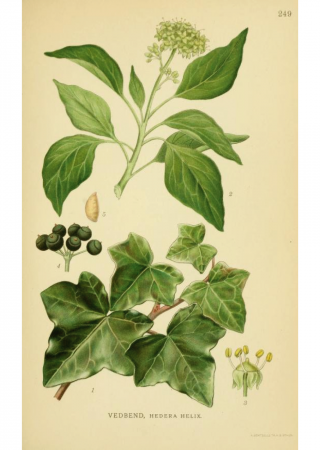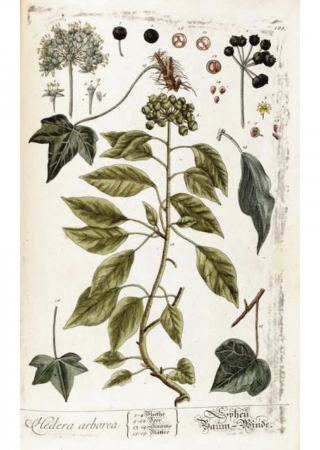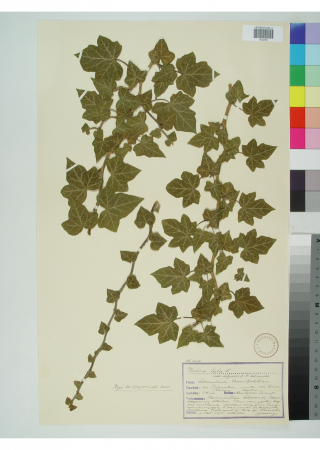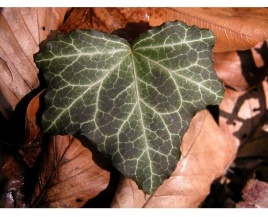Common Ivy
- …common ivy is an invasive plant?
- …ivy is heterophilic, meaning that one plant can have two different types of leaves?
- …branches without flowers have palmate leaves, while branches with flowers have cordate leaves?
- …although ivy is a liana, it can grow to an age of hundreds of years?
- …ivy prospers only where the average temperature of the warmest months does not drop below 13° C (55° F), and the coolest below -1.5° C (29° F)?
- …the oldest fossil example of the Hedera genus is known from the late Miocene (cca. 10 Mya)?
Ivy is a climbing, perennial, evergreen plant with deep roots. Its lianic stalk has numerous roots, springing from ganglia on the stalk. This gives ivy the ability to climb. The length of the stalk can be up to twenty meters. Leaves are alternating, 3-5 cm in size, dark green. Flowers are tiny and white; pods are small, dark blue to black berries, staying on the plant through spring. The berries are poisonous to humans. Ivy is grown for decoration in gardens, parks and cemeteries. It is resistant to pollutants, so it is used to cover walls or as a replacement for grass. Some cultivars are used in greenhouses or as houseplants. In western Europe, primarily in Britain, it is used to cover buildings (mostly brick structures). It helps insulate from excessive heat and guards against rain soaking into walls.




